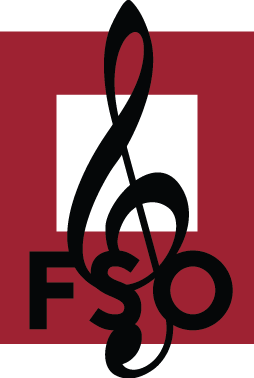
When people hear the term “classical music,” many minds think of Beethoven or Bach. Some might think of orchestras with grand pianos and even grander conductor motions. However, not many people know that classical music took centuries to evolve to what people recognize today. To help you understand the evolution, here’s a comprehensive timeline of classical musical periods and their histories:
Medieval (500-1400): This period is broken into three eras: Early Medieval music (before 1150), High Medieval music (1150-1300) and Late Medieval music (1300-1400). The most famous composition out of either period was the Gregorian chant, an unaccompanied sacred song of the Roman Catholic Church. Other popular music included Organum, Cantigas de Santa Maria and Troubadour. Composers like German Hildegard von Bingen and French Guillaume de Machaut used pan flutes, modern recorders, string instruments, jaw harps and early versions of the organ, fiddle and trombone.
Renaissance Classical (1400-1600): The cultural movements of the Renaissance Era included increased value of individualism, which was also reflected in classical music. Sacred church music like the Gregorian chant became more expressive, tapping into human emotion. The instrumental abilities of musicians expanded significantly as new instruments were invented and those from the Medieval era were vastly improved.
Baroque (1600-1745): Composers further explored the ability to express human emotions through highly ornate and colorful compositions during this period. Orchestras and opera also evolved from undefined chamber music ensembles to shows on primitive stages with large audiences. German composers Johann Sebastian Bach, George Frideric Handel, Johann Pachelbel and Italian composer Antonio Vivaldi were the most famous of this period.
Classical (1750-1820): Famous European composers like Germans Johann Christian Bach and Ledwig van Beethoven and Austrians Franz Joseph Haydn and Wolfgang Amadeus Mozart entirely changed the direction of music during this time. What was about human expression became about stricter textures, simple composition forms, and homophony (when melody and accompaniment are distinct). These composers were at the forefront of what would become “traditional classical” music.
Early Romantic (1820-1860): Germans Johannes Brahms and Felix Mendelssohn, French Claude Debussy, Polish Frederic Chopin, and Russian Pyotr Ilyich Tchaikovsky focused on fantasy, spontaneity and sensuality. Their music was about being expressive but not overwhelming, which combined all the ideas of the Renaissance, Baroque, and Classical periods. Compositions became about balancing human emotion with basic classical form.
Romantic/Impressionist (1860-1920): During this period, composers like Austrian Anton Bruckner let their inspiration dictate their compositions, which made for more emotional and dramatic pieces as opposed to structured, traditional compositions. The focus was shifted to the human emotion aspect once more.
Contemporary Classical (1920-present): Diversity between all periods of classical music is widespread during the beginning of the 20th century. Like all composers, Aaron Copland and George Gershwin intensified the search for new sounds of their era. Instead, they went back to 18th century harmonies, styles and directions and became influenced by other genres, including jazz, folk, rock and pop. Copland and Gershwin spearheaded a revolution, updating everything about traditional classical music with an American influence using the latest technology. Their movement is eventually labeled “neo-classical.”
The classical music that we know and love today has definitely evolved over many centuries. Over time, compositions have progressed from strict and structured to emotional and expressive. Nowadays, they’re a little bit of everything thanks to the revolutions by past composers worldwide.
For more information on composers, classical music, and concerts, subscribe to the Frederick Symphony Orchestra’s weekly blog:
